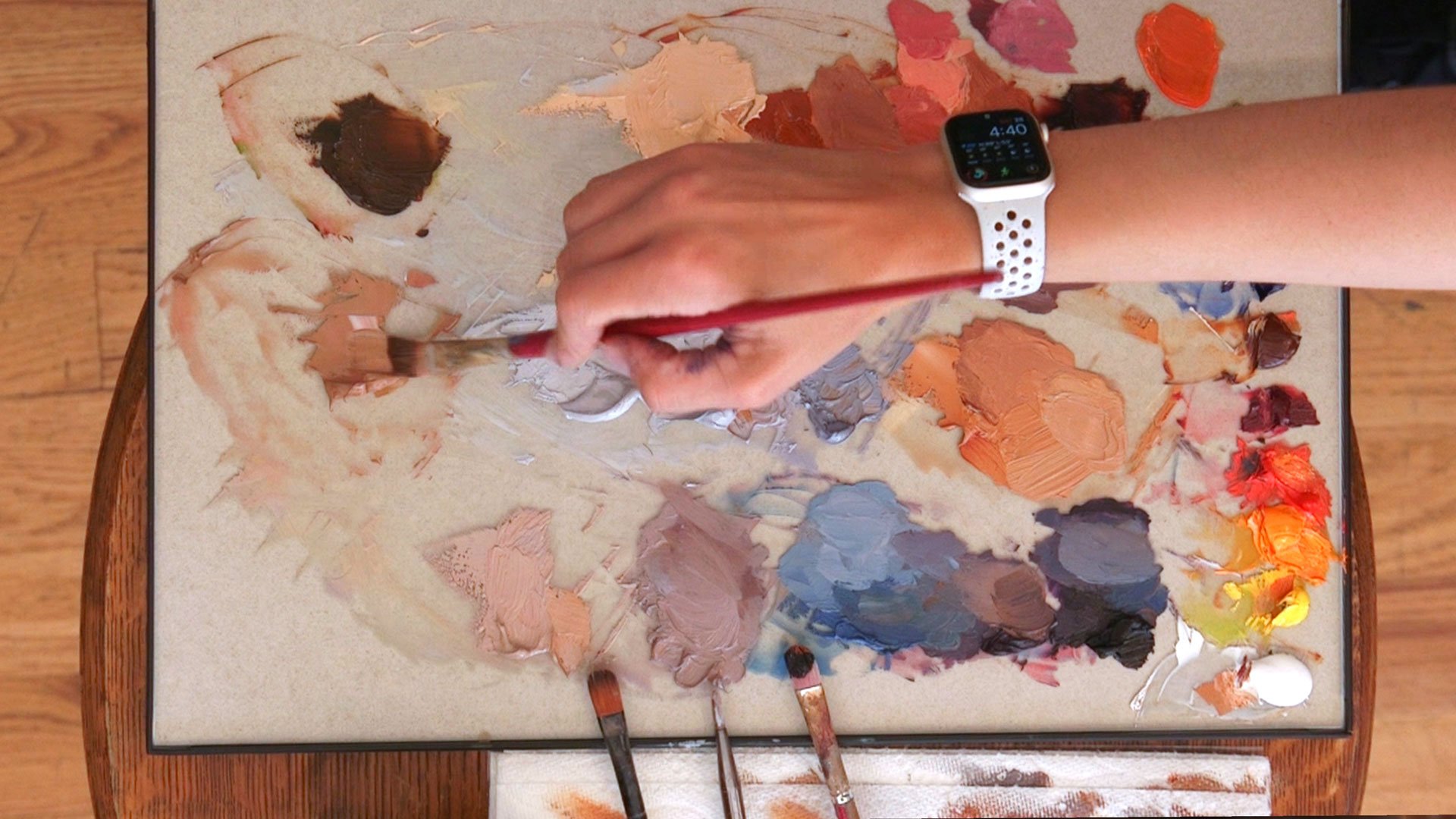Lesson 16: Creating a Soft, Atmospheric Background
In this lesson, we're moving to the background—an area that, while it may seem secondary, holds the power to shape the overall feel and focus of our painting. With a piece like this, I especially recommend using the largest brush size that you feel comfortable with to help keep the background soft and out of focus. This will help keep the focus on the horse, as well as encourage you to play with abstract brushwork around the edges.
Watch my MasterDemo to learn more.
Just Enough
I want to be mindful of where my brightest highlights on the horse will end up, and this will help direct where my background colors are most important. I’m aiming to keep the background as minimal as possible, thinning out my paint with Turpenoid when necessary to let the underpainting show through slightly. By utilizing the underpainting, we’re maximizing our efforts without having to spend a long time fiddling with the background.
Limited Options
We only mixed up two colors for the background, so this is an excellent time to practice distilling the information in your reference photo down to the bare essentials. Don’t worry about painting in every blade of grass - experiment with keeping your brushwork minimal and effective as you work your way across the canvas.
Embracing the Background’s Role in Composition
As I finish, I leave the background intentionally loose, relaxed, and impressionistic. It’s enough to set the scene without distracting from the focal point. This subtlety lets the viewer’s attention remain on the horse, reinforcing the softness and serenity of the composition.
Watch my MasterDemo to learn more.




